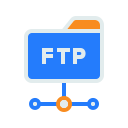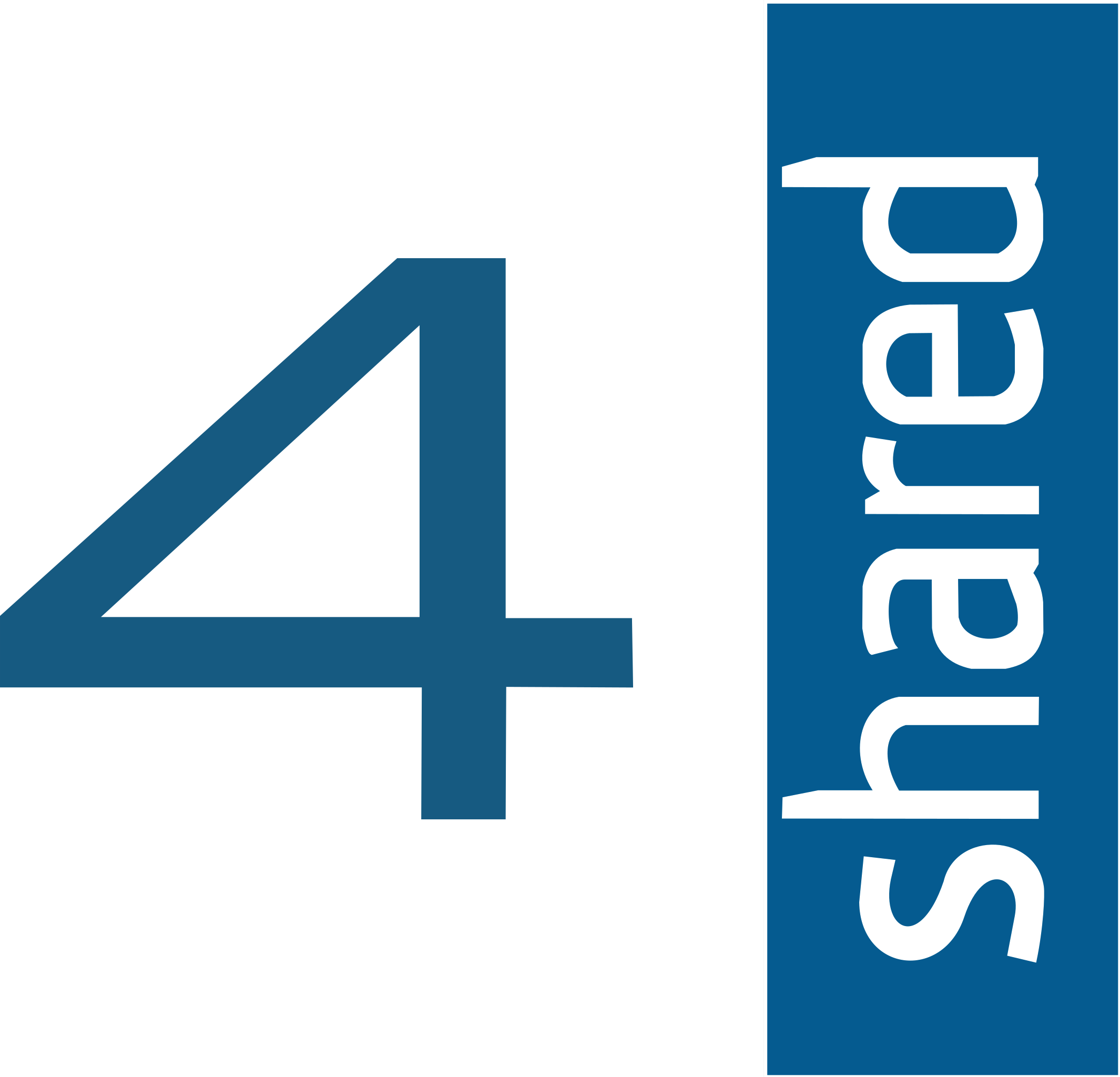PikPak to FTP/SFTP: Effortless File Migration
A straightforward, step-by-step guide to migrating your data from PikPak to an FTP/SFTP server — secure, efficient, and designed for peace of mind.
Introduction
With digital storage needs exploding, transferring your files from a platform like PikPak to an FTP or SFTP server is a savvy move—whether you're an individual with growing data or a business looking to preserve control of file flows. This article walks you through why making the switch makes sense, and how you can carry out the migration smoothly and reliably.
Quick Navigation
Understanding PikPak
PikPak is known for its simplicity and smooth user experience, offering fast uploads and easy file organization. It’s a convenient choice for users who want a quick and dependable way to store and share files online.
However, users who need more flexibility, direct control, or advanced data handling may find FTP/SFTP servers a better alternative. This guide walks you through why and how you might consider transferring from PikPak to an FTP/SFTP setup.
Features of PikPak
- Fast Upload Speeds: Upload your files in moments, helping you stay productive and minimize waiting time.
- Straightforward File Management: Organize and access your data easily through PikPak’s clean, user-friendly interface.
- Easy Sharing: Share files and folders in just a few clicks, making collaboration simple and efficient.
Advantages of Using PikPak
These core features make PikPak a convenient choice for users who want quick cloud access without complex configuration or setup.
- Free Storage to Start: Begin with a decent amount of free space and upgrade as your storage needs expand.
- Reliable File Sharing: Share securely with others, suitable for both personal and professional collaboration.
- Basic Security: PikPak employs standard encryption and access control to protect your files.
Exploring FTP/SFTP
FTP (File Transfer Protocol) and SFTP (Secure File Transfer Protocol) remain trusted solutions for managing and transferring files across servers. SFTP, built on SSH, adds encryption and authentication for a secure transfer experience. They are favored by individuals and organizations seeking full control over storage and data accessibility.
Key Features of FTP/SFTP
- Direct Server Control: Manage your data directly on your own server or hosting environment.
- Secure File Transmission: SFTP encrypts files and credentials during transfer, reducing the risk of interception or unauthorized access.
- High Compatibility: Easily integrate with automation tools, backup software, and web servers for advanced workflows.
Benefits of Using FTP/SFTP
- Enhanced Data Privacy: Keep your data under your full control with encrypted and private transfers.
- Cross-Platform Access: Connect through any FTP/SFTP client across Windows, macOS, or Linux environments.
- Flexible Storage Management: Organize and maintain your files with full administrative access and customizable permissions.
Why Transfer Files from PikPak to FTP/SFTP?
Moving your data from PikPak to FTP/SFTP can significantly improve how you manage, secure, and access your files. Here are some of the key advantages:
- Enhanced Security: SFTP uses SSH encryption, ensuring that all data and credentials are protected during transfer—offering a much stronger layer of security than standard cloud sharing.
- Complete Data Ownership: Unlike hosted cloud services, FTP/SFTP allows you to control your own server and storage, giving you full authority over where and how your data is stored.
- Efficient File Management: Manage, automate, and schedule transfers easily using FTP/SFTP tools that support batch uploads, scripts, and integrations.
- Flexible Access: Grant access to specific users or teams, define folder-level permissions, and streamline file exchange securely across locations.
Shifting from PikPak to FTP/SFTP is a strategic move for users who prioritize privacy, full control, and robust transfer options. With encrypted connections and direct server management, FTP/SFTP delivers flexibility and long-term reliability that surpass typical cloud-based platforms.
Preparing for Transfer
To ensure a stable and secure migration from PikPak to your FTP/SFTP server, take a few preparatory steps before starting the transfer:
- Verify Server Access: Confirm your FTP/SFTP credentials, host address, port number, and permissions. For SFTP, make sure SSH keys are properly configured for authentication.
- Back Up Your PikPak Files: Before initiating the transfer, back up your data to a local drive or an alternate cloud. This ensures recovery in case of unexpected interruptions or transfer errors.
Completing these steps helps guarantee that your transfer from PikPak to FTP/SFTP runs smoothly and safely. With verified credentials and backups in place, you can proceed confidently knowing your data is protected throughout the migration.
The Transfer Process
Transferring files from PikPak to pCloud involves a few key steps, which can be easily followed to ensure a successful migration
Step-by-Step Guide to Transfer Files
Step 1: Download Files from PikPak
Start by logging into your PikPak account. Locate the files or folders you want to move, then download them directly to your local device. If you are downloading multiple files or entire folders, PikPak may automatically compress them into a zip file. Once the download is complete, extract the zip file to access your individual files.
Step 2: Organize Files Before Upload
Before uploading to your FTP or SFTP server, it’s recommended to organize your downloaded files. Rename them for clarity, sort them into folders based on type or purpose, and ensure that large collections are divided into manageable groups. Proper organization helps prevent confusion and speeds up the upload process.
Step 3: Upload via FTP or SFTP Client
Open your preferred FTP or SFTP client such as FileZilla, Cyberduck, or WinSCP. Enter your server’s hostname, port number, username, and password (or SSH key if using SFTP). After connecting successfully, navigate to the desired folder on the server and upload your organized files from your local drive.
This manual method ensures you retain full control over where and how your files are stored on your FTP/SFTP server. For large transfers, consider uploading in smaller batches to maintain stable connections and minimize the risk of failed uploads.
Tools and Services for the Transfer
About CloudsLinker:
CloudsLinker offers an efficient way to transfer data between cloud platforms and servers, supporting more than 30 services, including PikPak, FTP, SFTP, OneDrive, Google Drive, and others. It performs transfers entirely in the cloud — meaning your computer’s bandwidth and data are not consumed. This approach simplifies file migration, ensures stable transfer speeds, and allows you to manage data across platforms securely and efficiently.
Step 1: Linking PikPak to CloudsLinker
To connect your PikPak account with CloudsLinker, open the 'Add Cloud Account' page and select the PikPak icon. You’ll be redirected to PikPak’s secure login portal, where you should enter your account credentials. CloudsLinker encrypts your login information to ensure safety. After logging in, click 'Link Account' to complete the integration between PikPak and CloudsLinker.

If your PikPak account is linked through third-party services like Google or Facebook, create a standalone PikPak password first. Visit the official PikPak website, log in, and navigate to Account and Security under your profile to set a password.
Step 2: Adding FTP/SFTP to CloudsLinker
In the 'Add Cloud Account' section, choose either FTP or SFTP as your destination service. To make the connection successful, ensure that your FTP/SFTP server has a host that can be accessed from the external internet. Then, enter your server’s host address, username, and password. If your server uses a custom port, input it accordingly — use port 21 for FTP or port 22 for SFTP if no specific port is assigned. Additionally, if your account only has permission to access a certain directory, specify that path in the 'Access Directory' field to avoid connection errors.

CloudsLinker supports both password-based and key-based authentication for SFTP. Double-check your firewall and access rules to ensure the server is reachable from CloudsLinker’s cloud infrastructure.
Step 3: Configuring the Transfer in CloudsLinker
Go to the 'Transfer' section in CloudsLinker. Set PikPak as the source and FTP/SFTP as the destination. You can select entire folders or specific files for migration. CloudsLinker handles the transfer automatically in the background, even if your browser or computer is turned off.

You can refine your transfer settings with CloudsLinker’s advanced filters — for example, to exclude certain file types or schedule transfers to run at specific times.
Step 4: Monitoring Transfer Progress
Open the 'Task' section in CloudsLinker to view ongoing transfers. The interface provides detailed progress updates and file-by-file transfer status. Failed or paused tasks can be resumed directly from this dashboard.
Step 5: Verifying Successful Transfer
After the migration is complete, log into your FTP or SFTP server using your preferred client (such as FileZilla or Cyberduck) and confirm that all files from PikPak have been uploaded correctly. Check directory structures, file sizes, and timestamps to ensure data integrity.
Organizing Your FTP/SFTP Storage
Once your files have been successfully transferred to your FTP or SFTP server, take a few moments to organize them properly for better access and long-term maintenance:
- Create structured folders: Set up a clear directory structure on your server. Categorize your files by type, project, or importance to ensure that your storage remains tidy and logical.
- Establish consistent naming rules: Use a clear and consistent naming convention for files and folders. This makes it easier to locate content later and helps with automation or syncing scripts if you use them.
- Verify access permissions: Check folder and file permissions to ensure that only authorized users or systems can view or modify sensitive files.
Enhancing Security on Your FTP/SFTP Server
Protecting your data after the transfer is crucial. Apply the following security measures to maintain a secure file environment:
- Use SFTP whenever possible: Prefer SFTP (Secure File Transfer Protocol) over FTP to encrypt both data and login credentials, preventing unauthorized interception.
- Enforce strong authentication: Adopt SSH key authentication instead of simple passwords for SFTP connections. Regularly rotate keys or update credentials for all users.
- Monitor and audit access logs: Review your server’s activity logs periodically. Monitoring for unusual login attempts or file modifications helps detect unauthorized actions early.
Addressing Post-Transfer Adjustments
After migrating files from PikPak to your FTP/SFTP server, some fine-tuning may be necessary to ensure optimal operation:
- Verify directory mapping: Ensure files are stored in the correct directories and that symbolic links or automation scripts still function as expected after the transfer.
- Automate backups: Set up automated backups using scheduled scripts or cron jobs to protect your data and simplify future maintenance.
- Update integration paths: If any software, website, or workflow references old PikPak file URLs, update them to point to your new FTP/SFTP server locations.
FAQs on Migrating from PikPak to FTP/SFTP
How can I ensure my data stays secure during the transfer to FTP/SFTP?
Why should I move my files from PikPak to an FTP/SFTP server?
Can I transfer directly from PikPak to FTP/SFTP without downloading locally?
How do I prevent data loss during migration?
Are there costs associated with transferring from PikPak to FTP/SFTP?
Watch the PikPak to FTP/SFTP Transfer Tutorial
Want to see how the transfer works in real time? Watch our step-by-step tutorial on using CloudsLinker to migrate files from PikPak directly to your FTP or SFTP server. Learn how to connect accounts, configure host access, and monitor transfers easily from one intuitive dashboard.
Conclusion
Migrating from PikPak to an FTP or SFTP server is more than a simple data transfer — it’s a conscious decision to take greater control over your files, strengthen data security, and streamline access across your infrastructure. This guide has detailed each step of the process, emphasizing the flexibility and reliability that FTP and SFTP provide for both personal and enterprise environments. Choosing FTP/SFTP means opting for direct ownership of your storage space, uncompromised encryption during transit, and full transparency in how your data is handled. In today’s digital climate where privacy and operational independence are increasingly important, hosting your files via FTP or SFTP reflects a proactive stance toward safeguarding valuable assets while maintaining complete administrative control. This migration is not merely about moving data — it’s about building a sustainable, secure, and self-managed storage foundation for the future.
Online Storage Services Supported by CloudsLinker
Transfer data between over 44 cloud services with CloudsLinker
Didn' t find your cloud service? Be free to contact: [email protected]
Further Reading
Effortless FTP connect to google drive: Transfer Files in 3 Easy Ways
Learn More >
Google Photos to OneDrive: 3 Innovative Transfer Strategies
Learn More >
Google Photos to Proton Drive: 3 Effective Transfer Techniques
Learn More >











































